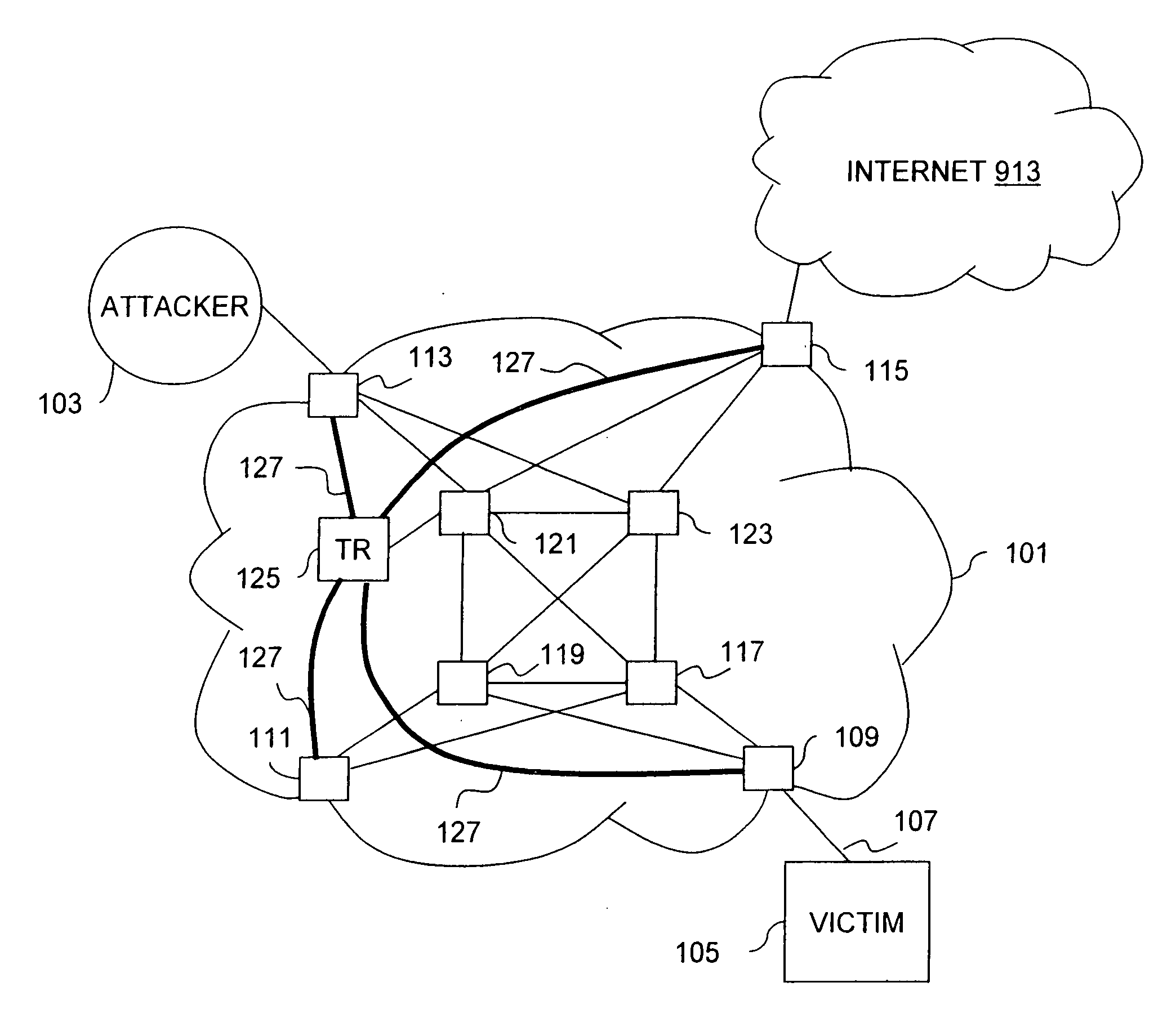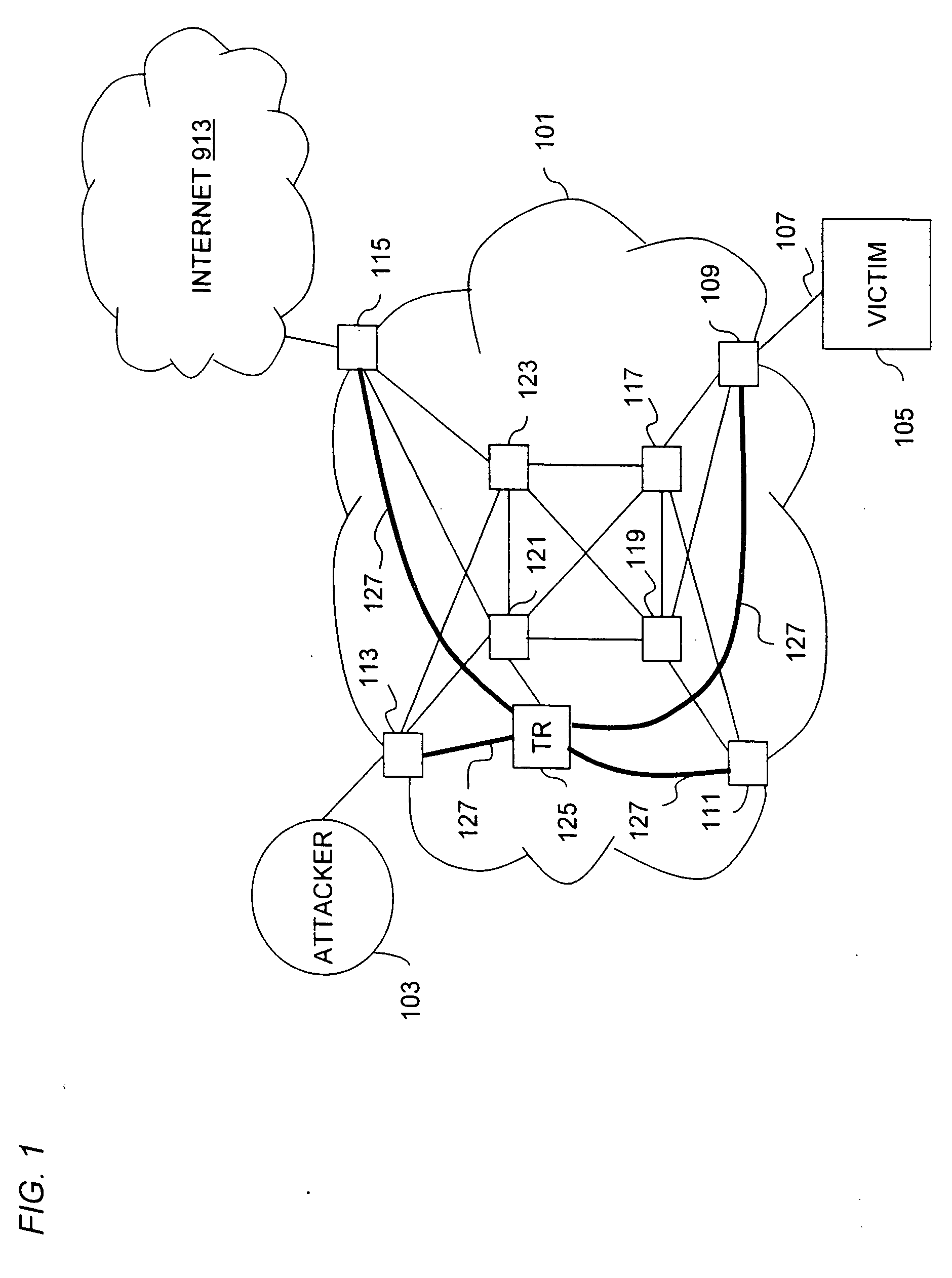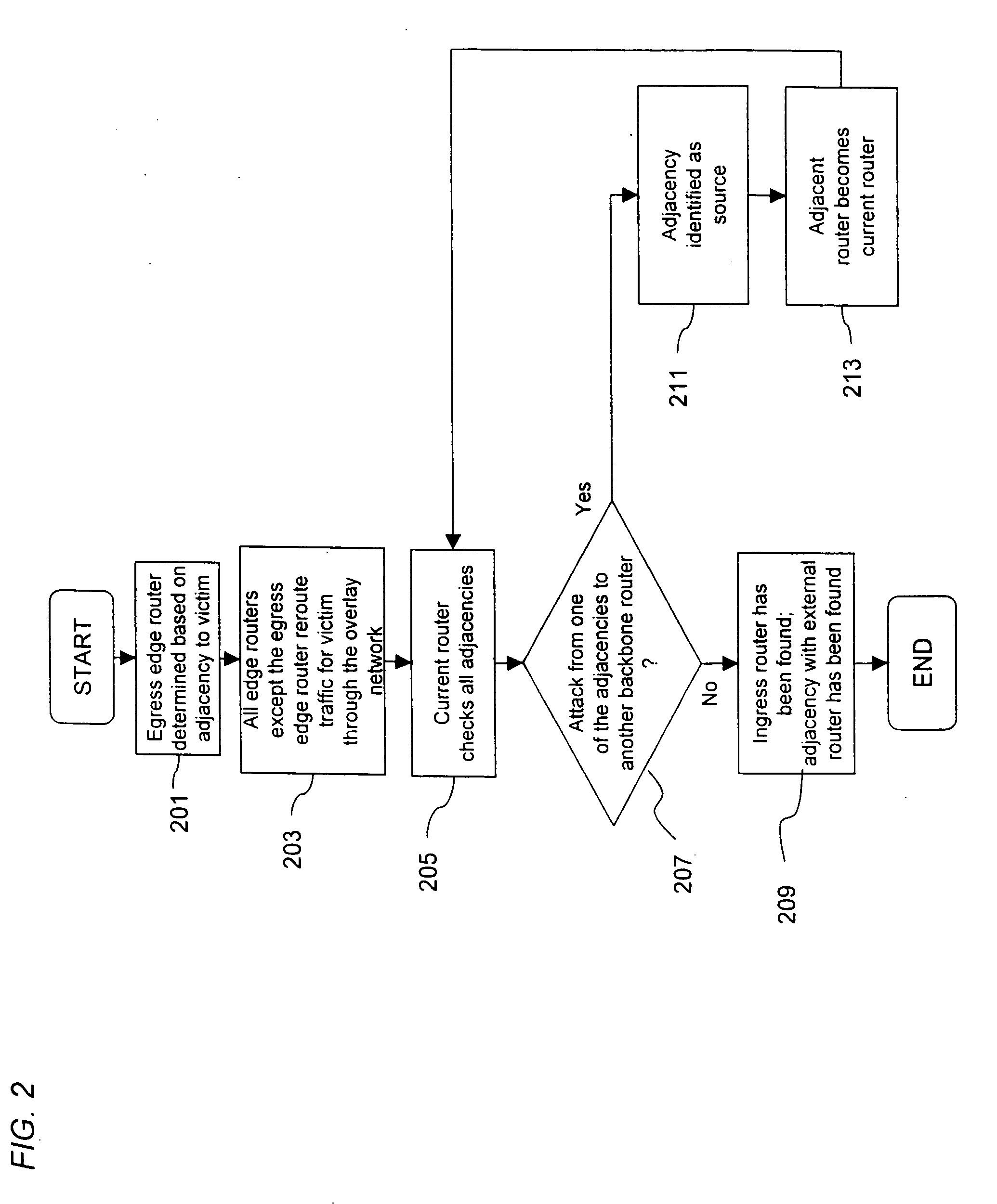Overlay network for tracking denial-of-service floods in unreliable datagram delivery networks
a datagram delivery network and overlay network technology, applied in the field of data communication, can solve the problems of consuming precious bandwidth on the backbone network of isps, negatively affecting service availability, and overwhelm the victim's connection, so as to minimize the cost and deployment time of introducing a network security mechanism to counteract denial-of-service flood attacks. the effect of minimizing network complexity
- Summary
- Abstract
- Description
- Claims
- Application Information
AI Technical Summary
Benefits of technology
Problems solved by technology
Method used
Image
Examples
Embodiment Construction
[0030] In the following description, for the purposes of explanation, specific details are set forth in order to provide a thorough understanding of the invention. However, it will be apparent that the invention may be practiced without these specific details. In some instances, well-known structures and devices are depicted in block diagram form in order to avoid unnecessarily obscuring the invention.
[0031] The present invention provides a valuable solution for the tracking of DoS flood attacks using existing hardware and software infrastructure. An overlay network, which consists of IP (Internet Protocol) tunnels, is created to selectively reroute flood attack datagrams directly from edge routers to tracking routers. It is recognized that the tunnels may be created in general over any unreliable datagram delivery service protocol. The edge routers and the tracking routers are equipped with security diagnostic features to perform, according to one embodiment input debugging. The t...
PUM
 Login to View More
Login to View More Abstract
Description
Claims
Application Information
 Login to View More
Login to View More - R&D
- Intellectual Property
- Life Sciences
- Materials
- Tech Scout
- Unparalleled Data Quality
- Higher Quality Content
- 60% Fewer Hallucinations
Browse by: Latest US Patents, China's latest patents, Technical Efficacy Thesaurus, Application Domain, Technology Topic, Popular Technical Reports.
© 2025 PatSnap. All rights reserved.Legal|Privacy policy|Modern Slavery Act Transparency Statement|Sitemap|About US| Contact US: help@patsnap.com



